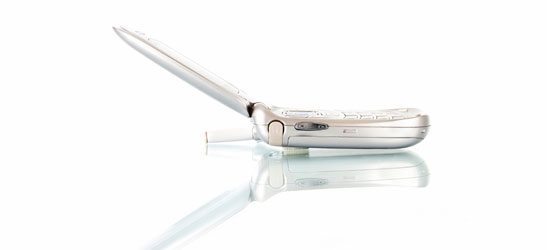This used to be a pie-in-the-sky proclamation — the idea of charging all of your gadgets without plugging them into an outlet. Less than five years ago there was a lot of chatter about this tech on the horizon, and now it’s on store shelves. And not just one solution is available. Consumers actually have a choice in what kind of wireless charging devices they want.
The concept for all of the options is the same: one charging mat that plugs into one wall outlet — so not totally wireless. From there, you hook various cases onto your device to enable the charge when you set said device down on the pad. The cover options — ranging from un-obtrusive back covers to stylish hard cases — are in line with what you’d normally purchase for your smartphone, but with the added convenience of enabling a power transfer when placed on the charging mat. Here’s a look at what’s available now:
Powermat – Sleek but Expensive
Powermat has positioned itself as the hipsters’ answer to wireless charging. The skateboard-looking oblong pad makes a stylish addition to the gadgetista’s living or work space. It can charge up to three devices at once on it’s longest pad (one device on its portable pad) and works with about 20 different mobile gadgets.
Most of the Powermat’s compatibility is with smartphones, including the iPhone 4, various Blackberry models, and Droid X. It also works with Nintendo DSi and iPod. But that’s where it’s compatibility stops. Seems a little silly to buy a wireless charging system that only works with your phone and one other device, but the company is working to roll out additional accessories for more devices.
Powermat is on the expensive side, starting at $69 just for the pad and $29 for the back covers. $100 for wireless charging? Maybe if they were the sole player in this space. But with several competitors already selling product and a fresh crop creeping up, Powermat may need to rethink their pricing strategy.
World Leaders in Battery Power – Now Leaders in Wireless Power?
Two of the biggest names in power jumped into the wireless charging market this year — Duracell with its MyGrid and Energizer’s Inductive Charger. The Duracell MyGrid uses conductive charging technology (while everyone else in this space uses inductive) and offers a small, light, charging mat that can power up to five devices at once.
The MyGrid is compatible with hundreds of devices as opposed to the limited number with other wireless charging systems and is cross-compatible with other manufactures that use the same technology. This is a huge bonus if you have multiple devices you wish to charge wirelessly. Another bonus is you don’t have to place the devices in a certain order on the mat. That means if you stumble home and toss your phone onto the general area of your counter top where the mat sits, and it actually lands on the mat, it will receive a charge.
Energizer has taken a difference approach and one that is more in line with where this industry is heading – building the technology into the device, so no extra case or charging accessory is needed. The Energizer Inductive Charger has limited capability now — only working with iPhone 4 and 3Gs and the Blackberry Curve. But what’s so cool about this is you can just replace the back of the phone with a new backing that has the charging technology built in.
This is part of an initiative by the newly formed Wireless Power Consortium. The WPC is working to create an international standard for interoperable wireless charging, called Qi (pronounced “chee”). The idea is that manufacturers — with several including Energizer, already on board — will develop devices that are Qi compliant. When this standard is set, consumers will have the technology automatically included in their devices (sort of like GPS is now included in all phones), and they will work any charging pad they choose. Manufacturers that adopt this charging standard would have a Qi logo on their packaging.
Duracell’s MyGrid bundles start at $89 and Energizer’s at $85; so they’re still pretty pricey.
Other companies that are taking a stab at the wireless charging market include Fulton Innovation with it’s eCoupled Technology, and Radio Shack with a line called Enercell coming out this spring.




